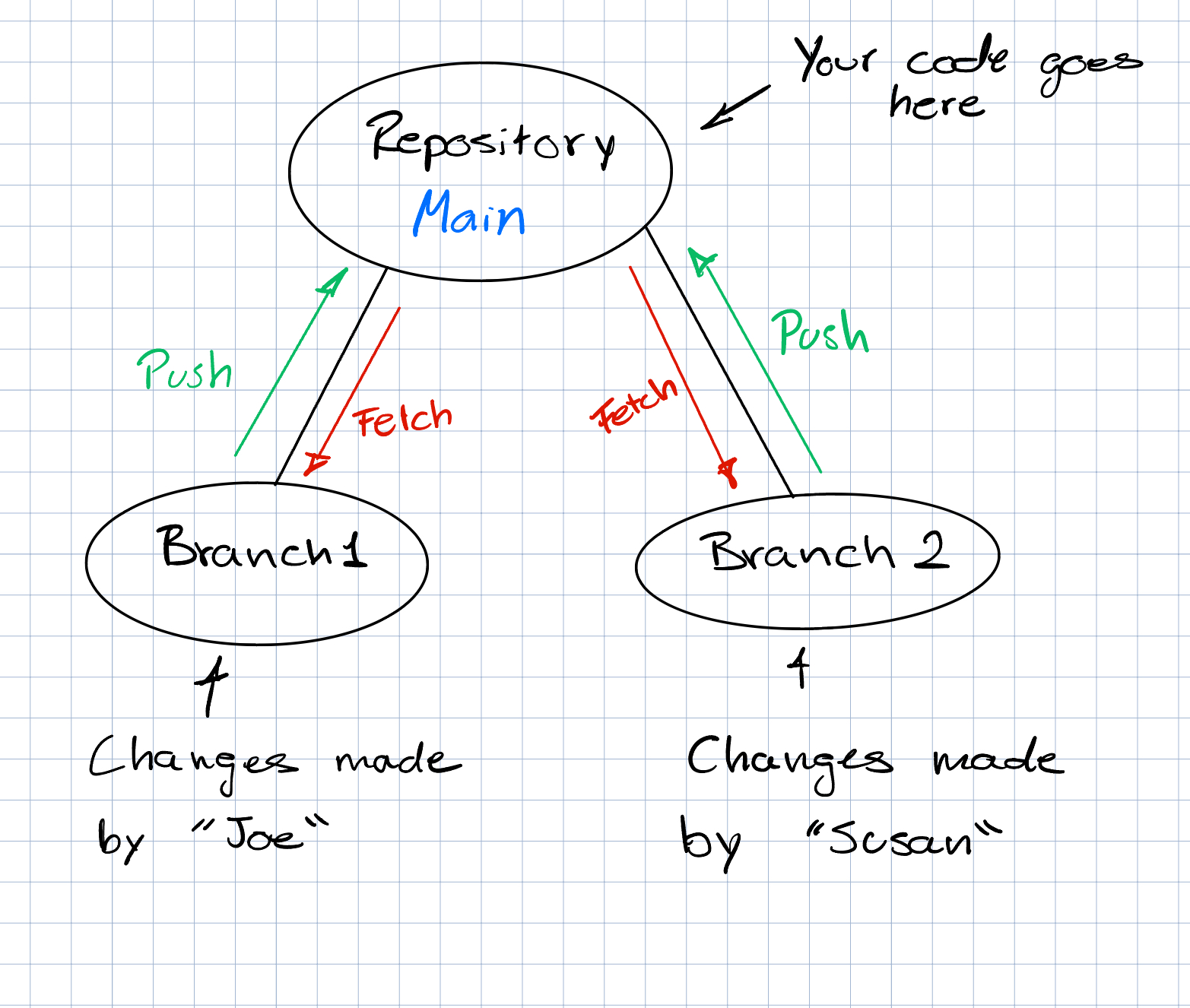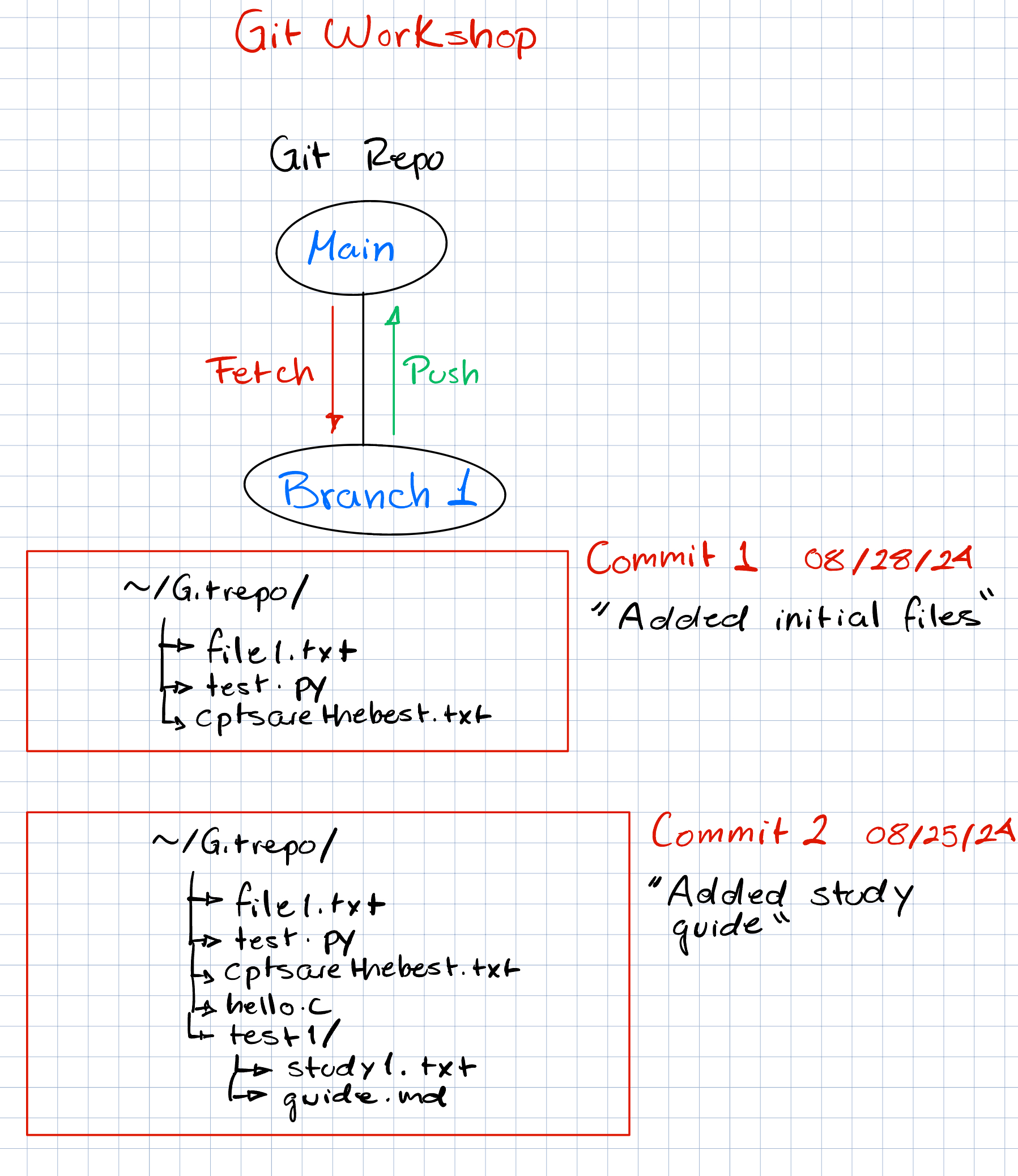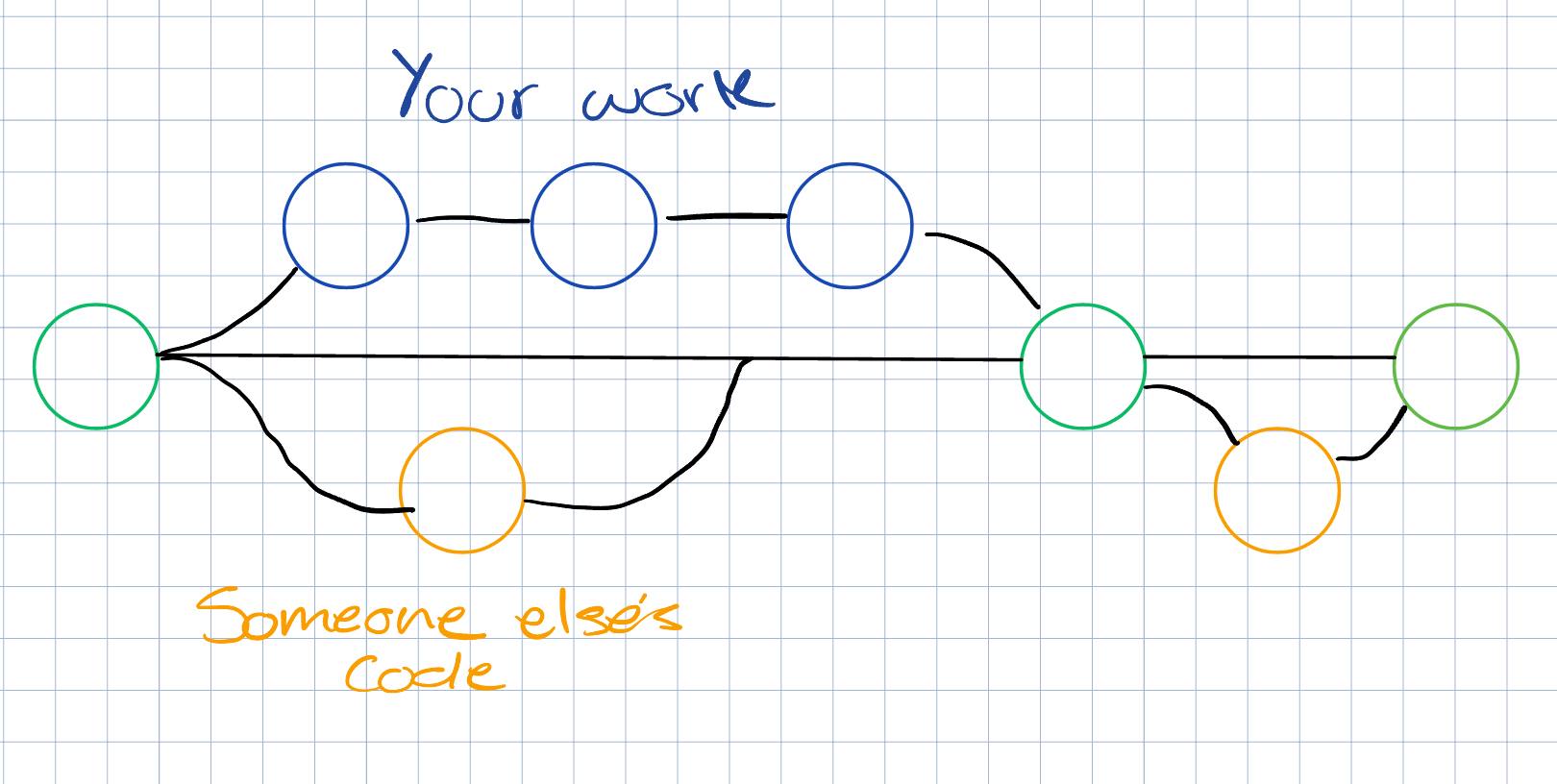Using git
How does it work?
You will first create what is called a repository, this is the place where your code will be.
In our case main will be our master repository. This is the main code that will be used.
Branches
Branches allow you to work on different versions of your project simultaneously without affecting the main codebase
From this main code you can create branches, this allows you to make changes without the chance of ruining the main code. Think of it as a copy of your code that you can now change with zero risks.
Use this command to create a new branch:
git checkout -b "name_of_the_branch"
To switch branches
git checkout "name_of_the_branch"

Staging
Once we made some changes we will want to commit them, before we can do that we want to stage the files. This is like another layer to saving your files. This is so if you have two files you changed but only one is ready to commit, you can select the file to stage.
To stage your file run this command:
git add file_name/folder_name
TIP:
use this command to see the changes made.
git status
Committing
Creating a commit creates a snapshot of all the staged files
TIP: For commit messages do you not use past tense, such as "I made headings blue". Use language like "Make headings blue", as if you are giving orders to the codebase.
This command creates a commit:
git commit -m "description of the commit"

A good way of visualizing how this works

Merging branches
To bring the latest changes in branch_a into main, we would first switch to the main branch...
git checkout main
and then run the git merge command.
git merge branch_a
If the files modified in main and branch_a (after branch_a was created or after the last merge) are mutually exclusive, then git should be able to do this automatically. However, if the same file was modified in both branches, you probably encounter this:
CONFLICT (content): Merge conflict in my_file.txt
Automatic merge failed; fix conflicts and then commit the result.
Before you do anything else, you will need to fix the merge conflicts. Git represents these conflicts within each file using the following template (or something similar, if you've modified the default settings):
<<<<<<< HEAD
Change in the main branch
=======
Change in branch_a
>>>>>>> branch_a
To resolve this, replace the text above with the final desired version (it could be one or the other, or a combination of both). Once you've resolved all of the conflicts in (and saved) each file, stage the files and create a new commit. This completes the merge process.
Afterwards, you may delete branch_a.
git branch -d branch_a